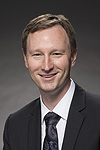Putting the A in FNAL
 |
|
Tim Meyer
|
I refer to our lab so often as Fermilab that I sometimes forget the formal title: Fermi National Accelerator Laboratory. Similarly, I sometimes take for granted that Fermilab is an accelerator-based, particle-physics laboratory. It all starts with an accelerator! The past few weeks, though, have deepened my appreciation both for our prowess with these sophisticated technologies and for how much they will shape our collective future.
Just recently, the Fermilab team has demonstrated new levels of accelerator achievement. Fermilab demonstrated week-long delivery of 400-kilowatt beams to the neutrino program. This is important to our stakeholders because it underscores our ability to reliably and consistently meet expectation. Elsewhere at Fermilab (in the NML building), we set a record at the lab — electron beams at 20 MeV! You might have thought Fermilab's tool of choice was a proton beams, but with the acceleration of an electron beam through an SRF-based accelerator, the lab has joined an elite club that is mastering the creation, control and acceleration of both types of particles.
These milestones took serious effort, patience and focus to reach, and they required participation from across the lab — not just the Accelerator Division or the Main Control Room. Congratulations to everyone and especially to the core teams for demonstrating that the A in FNAL is there for a reason!
But Fermilab's success with accelerators extends beyond accomplishments in research and development. There is an A in IARC that also stands for accelerators. I spent 36 hours in Washington, D.C., working with IARC head Bob Kephart to talk with other federal agencies about how Fermilab's accelerator expertise could be put to use outside of the basic science of particle physics. The informational discussions also helped put the IARC initiative into focus for me.
Consider how Fermilab works with the U.S. and global particle physics community. Scientists identify a set of accelerator-produced "conditions" they need to create and explore a regime of particle physics. Scientists, engineers and technicians then work on the design, construction and operation of the accelerator to meet those needs.
What we're doing with IARC is similar, but instead of asking particle physicists what type of accelerator they might need, we're talking with other communities, focusing on the needs of industry and marketplace.
We aren't starting the conversation with a cold call. We have some ideas about different platform technologies that could be developed and deployed for a whole cascade of uses, and a key part of this round of "first dates" is to assess which avenues look most promising.
An important "milestone" in this effort is a special, industry-focused workshop jointly planned by Argonne and Fermilab on April 28. This workshop will serve as the Midwestern launch of the DOE Accelerator Stewardship Test-Facility Pilot Program.
The road ahead is a long one, not only because these potential new partners are less familiar with accelerators, but also because we are not as familiar with the issues and the constraints in these other industries and businesses. But I look to our recent accomplishments on site as evidence and inspiration. We've come together to deliver consistent success with accelerators, and with patience and focus, we will persevere.
Fermilab got an A for accelerators. Let's keep it up!
P.S. If anyone knows where I can get an "A is for accelerator" book for my daughter Norah, please email me!
|